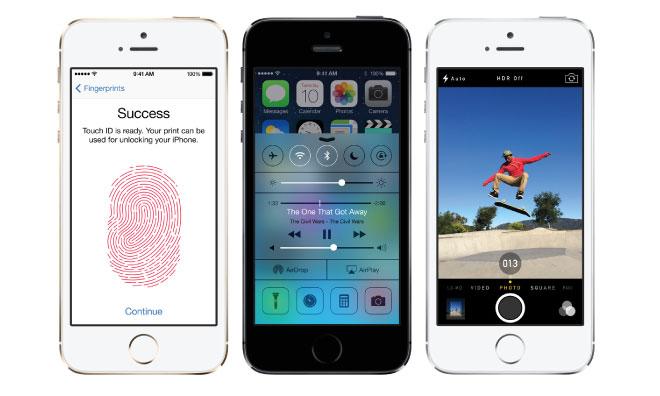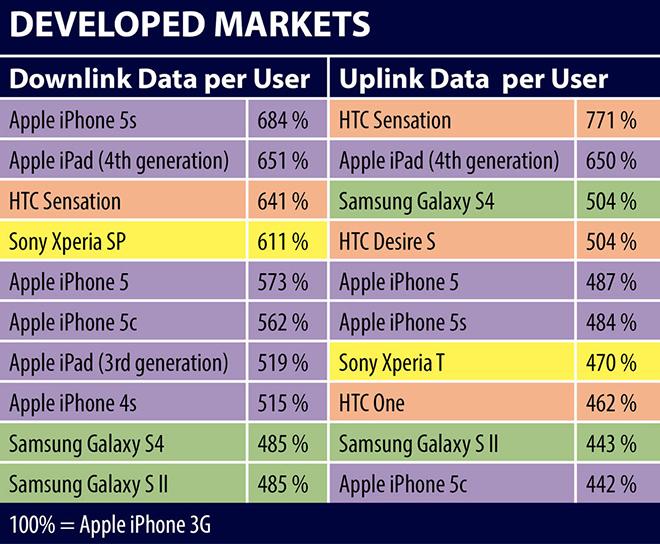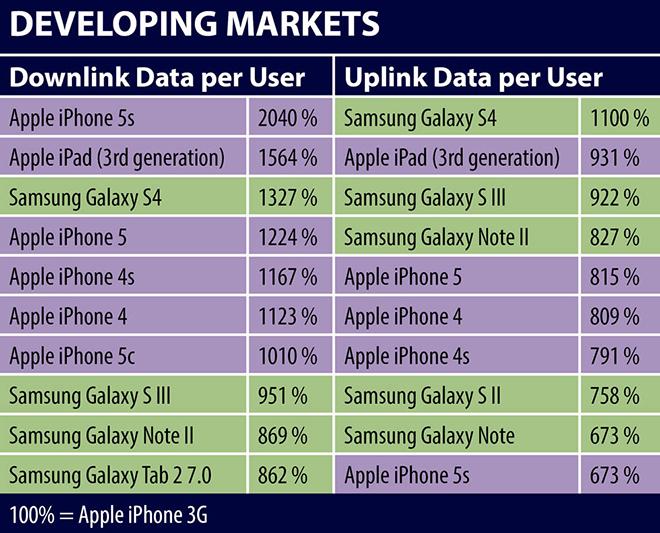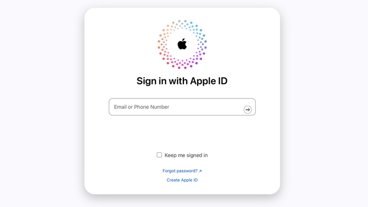Study: iPhone, iPad users most voracious data consumers in developed and developing markets
For the fourth year in a row, network technology firm JDSU found owners of Apple's iDevices to be among the most "data hungry" of portable device users, with the latest figures showing iPhone 5s consumption up by 20 percent compared to the iPhone 5.
In its annual report released on Wednesday, JDSU's Location Intelligence Business Unit (formerly Arieso) saw growth in data consumption from owners of flagship handsets like the iPhone 5s, even as wireless data becomes more mainstream in developed markets.
As noted by TechCrunch, JDSU's 2013 data consumption study tracked over one million subscribers in a "Tier 1" European market and another one million subscribers in an unnamed developing market. Owners of more than 150 different devices, including smartphones and tablets, were monitored over a 24-hour period to gauge average data use.
The results showed Apple product owners are the most demanding of all users. As seen in the above chart, iDevices account for six of the ten "hungriest" devices in the study's developed market measurements, with the iPhone 5s taking the top spot in downlink data per user.
"Each new generation of iPhone has resulted in increases in data consumption of between 20-40 percent — even today when data use is common," said Dr. Michael Flanagan, CTO of Mobility for the Network and Service Enablement business segment of JDSU and author of the study. "Though interestingly, users of the more economically-priced iPhone 5c consume data in the range between that of the iPhone 4s and 5 users."
iPhone 5s owners in developed countries gobbled up seven times more data than baseline measurements provided by iPhone 3G users. This represents a 20-percent increase over 2012's iPhone 5, which took the top spot for that year's study. Further, iPhone 5s users demanded 20 times more data in developing markets, or a 50-percent increase over the iPhone 5.
While not noted in the report, iPhone 5s users may be more likely to suck down data as the device is built specifically for use on speedy 4G LTE networks. Aside from a better user experience, faster networks allow subscribers to access more data in a given period.
"The faster the speeds that mobile operators provide, the more consumers swallow it up and demand more," Flanagan said. "One would expect a honeymoon period in which early adopters test their toys. But for 4G users to consistently exhibit behavior 10 times more extreme than 3G users well after launch constitutes a seismic shift in the data landscape."
Interestingly, developing markets saw higher data consumption from flagship smartphones compared to developed markets. This can be attributed to two factors, Flanagan said. The first is that the iPhone 3G which was the standard benchmark for JDSU's study, exhibits lower data consumption per user in developing markets. The second reason may be the absence of data-hungry devices like tablets, cellular data cards and other equipment.
As for uplink consumption, Samsung's Galaxy S4 lead the pack in developing markets while placing third behind the iPad 4 and HTC Sensation in Europe. The metric was ascribed to the S4's larger camera sensor, which produces larger files for uploading to various social networks and cloud storage services.
Overall, the study offers valuable insight into the future of cellular data communications. Some thought consumption would even out as smartphones and tablets reached saturation points, but the study's data suggests no such slowdown is in sight. With rich Web content, high-resolution streaming and smart device proliferation, advanced data networks will more than likely see the equivalent, or higher, demand in the coming years.
 Mikey Campbell
Mikey Campbell













 Mike Wuerthele
Mike Wuerthele

 Malcolm Owen
Malcolm Owen
 Chip Loder
Chip Loder

 William Gallagher
William Gallagher
 Christine McKee
Christine McKee
 Michael Stroup
Michael Stroup







10 Comments
Of course. They’ve never had anything like this before, so they’ll be the most voracious.
Comical... Why do Samdung users have almost as much upload as download? Don't exactly seem like a bunch of third world Shakespeare's or Michelangelo's! What exactly is Sammy up to... This is bizarre
Makes sense. Other stats seem to support the idea that people use their iOS devices, as opposed to "activating" them and then putting them in a drawer until the next OS release to be reactivated again. ;)
Comical... Why do Samdung users have almost as much upload as download?
Don't exactly seem like a bunch of third world Shakespeare's or Michelangelo's!
What exactly is Sammy up to... This is bizarre
It is all that extra tracking data being sent to Big Brother, err.... Google.
The emerging middle class world wide would like things to differentiate themselves from the populace. Apple offers an almost singular perspective/experience on its fields of expertise. So why would not those friendly experiencers enjoy the moment? What electronics provides in abundance is information, people consume information voraciously. Seems obvious.